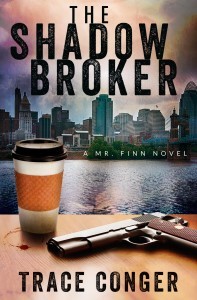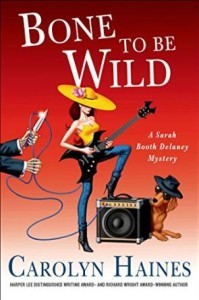Elizabeth Spann Craig's Blog, page 119
June 5, 2015
In a Rush to Publish? Better Ways to Shave Off Time
By Elizabeth S. Craig, @elizabethscraig
There has been a good deal written about the need for self-publishing authors not to be in a rush to publish. And yet, there has been a good deal written about the need for self-publishing authors to quickly produce for financial success.
These bits of advice aren’t really as contradictory as they seem. The time to move things along, I believe, is when we’re writing. The time to be thoughtful and unhurried is during the packaging process…the editing and cover design. The finishing touches need time.
What can we do to make our writing go faster? Here are some things that have helped me:
On a daily basis:
Know what you’re going to write that day (at least the plot points).
Think about where you left off and what you’re going to say next before you open the laptop (I mull things over in the mornings as I let the dog out and as I’m making myself coffee.
Eliminate distractions. For some, this means just closing windows on their computers until the manuscript is the only thing up. For others, it means disconnecting from wifi.
Set timers. Write for your target amount of time, then check social media/do other things you’ve been dying to do while writing. Then set a timer again. Repeat until you can reach your target.
Diagnose problems and roadblocks. This is the single most-important thing I do each week to write faster. Because, for me, slowing down happens about once a week. I don’t have time to sit around and stare at the screen. I don’t have time to edit too much bad writing—and I know when I’m producing the written version of “uhhh.” This is what I ask myself, because frequently I don’t know what the problem is before I think it through. Is there a better time of day to write? Is home too distracting and the library might be better? Am I procrastinating writing a scene because I know it’s not right for the characters? That it’s boring? That it’s unrealistic?
It’s so much better to take a day off from drafting and brainstorm new story directions. Ultimately, that day of brainstorming and planning saves me the most time of any of my time-saving tricks.
Per project:
When writing multiple series, I’ve found the next book goes much quicker when I outline the following book immediately after finishing a book in that series.
Secure editing and cover design before finishing the project. Same with beta readers. There have been several times when I’ve assumed my cover designer or editor was available as soon as I finished a project—and then I learned they were booked months out.
I’ve found the best way to hurry a project along is on my end of things, with the writing. If I can streamline my process, eliminate distractions, and dedicate the time I need, then I hit my goals every time.
How do you keep projects on track?
Tips for making a writing project go faster:
Click To Tweet
Image: Death to the Stock Photo
The post In a Rush to Publish? Better Ways to Shave Off Time appeared first on Elizabeth Spann Craig.
May 31, 2015
10 Items for a Successful Book Event
by Trace Conger, @TraceConger
Book events are a great way to sell books. You’re in a target-rich environment, surrounded by buyers who are eager to find their next favorite book.
Aside from sales, book events are a fantastic way to raise awareness of your work, engage with readers/fans, garner signups for your author newsletter or email list, and talk shop with other authors.
If you’ve never participated in a book event (or even if you have) you might be wondering what items to bring to maximize your sales. Keep the following 10 items in mind and you’ll be on your way to selling more books and winning more fans at your next event.
1. Books
This might seem like a no brainer, but some authors attend book events to promote a digital book or a book that isn’t yet available for sale. Handing out cards with a URL to your ebook isn’t going to cut it. Event attendees are looking to buy then and there (not on your website later).
Be sure to display your wares in an attractive way and consider using a small display stand to showcase your book(s).
2. Credit card reader
I can’t count the number of sales I’ve seen authors lose because they don’t accept credit cards. Providers such as Square and PayPal offer free credit card readers that plug into your smartphone. These services are free to use, although they take a small percentage of the sale (Square for example takes 2.75%). I’d rather turn over a small portion of a credit card sale than miss a sale altogether because I can’t swipe a card.
Be sure to include a small sign on your table indicating which cards you accept.
3. Change
Even if book attendees prefer to pay in cash, they might not have the exact amount. Be sure to have bills and coins available to make change.
4. Quality signing pens
Buyers will want you to sign your book, so be sure to keep a few good pens with you. Remember that pens only run out of ink when you really, really need them to work, so be prepared with extras.
5. Email sign-up sheet
As a savvy author, you should already be cultivating an email list for book promotions. Keep a sign-up sheet on your event table so you can capture attendees’ email addresses.
If you’re offering something as an incentive for signing up—say a free ebook or short story—mention it on the sign-up sheet. Remember that presentation is everything; so take ten minutes to print out a few sign-up sheets that look professional (I attach mine to a quality clipboard). You’re so much better than a legal pad.
6. Banners and other signage
This one is tricky because events have different regulations on what signage you can and can’t use. I’ve attended some where they’ll let authors erect a ten-foot vertical banner, and others where authors couldn’t use anything over 24-inches tall. Banners can be expensive, but quality imagery can set you apart from the other participating authors and boost your brand.
7. Tablecloth
No one likes a naked table. Most events will provide a table and a tablecloth, but it’s worth confirming with the event prior. Even if the event supplies one tablecloth, consider having another on hand. Remember, while you’re not really “competing” with other authors, you are competing for eyeballs, so the goal is to make your display as attractive as possible.
8. Bookmarks/Postcards/Business cards
I always bring branded bookmarks and postcards (with my book information) to hand out. Not everyone who comes to my table is going to buy a book, but I still want to give them something with my book title(s) and URL on it. Media reps also collect these materials since they might be interested in following up with you after the event.
9. Sweets
One thing attendees like more than books is candy. Providing candy is a great way to attract people to your table and initiate a conversation. Plus, it gives you something to eat when the crowd dies down and you’ve missed lunch. As with everything else, be sure to check the event guidelines, as some events won’t allow any food items. Since presentation is key, I always keep candy in an attractive wooden bowl, not just spread across the table.
Fun fact: I recently participated in an event where the author next to me offered a free slice of cake with every book purchase. I wouldn’t take that approach myself, but it speaks to his creativity.
10. Dolly/suitcase/cart
Even if you’re just keeping to this list, you’ll have a lot to carry. When I attended my first event, I had to park ¼ mile away from the venue and carry everything from a parking garage. That got old very quickly. Now, I use a collapsible, wheeled cart to transport my items from my vehicle to my table.
Having a cart makes packing up easier and will save you thousands in future chiropractor payments.
As a final tip, keeping a checklist of your preferred items ensures you won’t forget anything when packing for an event. Otherwise, something always falls through the cracks.
I’ve provided the basics here, but you might also prefer taking promotional swag (coffee cups, etc), raffle items, or plastic bags (for customers buying multiple books). The list can go on and on.
How about you? Got any other tips to help authors prepare for an event? Throw them in the comments.
Trace Conger is an author in the crime, thriller, and suspense genres. His debut novel, THE SHADOW BROKER, follows Finn Harding, a disgraced PI, as he straddles the fine line between criminal investigator and criminal. Conger lives in Cincinnati. Find him online at www.traceconger.com.
The post 10 Items for a Successful Book Event appeared first on Elizabeth Spann Craig.
May 30, 2015
Twitterific Writing Links
by Elizabeth S. Craig, @elizabethscraig

Twitterific writing links are fed into the Writer’s Knowledge Base search engine (developed by writer and software engineer Mike Fleming) which has over 30,000 free articles on writing related topics. It’s the search engine for writers.
True Dramatic Arc vs. Static Situational Narrative: http://ow.ly/N8cUi @storyfix
21 Social Media Don’ts: http://ow.ly/N8cno @writers_write
Be a More Productive & Balanced Writer: http://ow.ly/No78B @JordanRosenfeld
Don’t waste time with unnecessary words: http://ow.ly/N8cvp @shalvatzis
Should Everyone Publish a Book? http://ow.ly/N8exe @LorraineDWilke
5 Books About Magical Realism: http://ow.ly/No7je @TonyPuryear
When It Feels Like Everyone Is Getting What You Want: http://ow.ly/No7aA @nataliewhipple
Wake Up and Stop Writing Dream Sequences: http://ow.ly/No75P @givemeyourteeth
Taking Care of Business: The Author Biography: http://ow.ly/No7fN @ashkrafton
Making a Dark Character Likeable through Vulnerabilities: http://ow.ly/No6Nx @marypapas2
Writing, Publishing, and Solitaire: http://ow.ly/No7e6 @nataliewhipple
How to Connect With Other Authors on Facebook and Twitter: http://ow.ly/No72v @amcbooks
Now, Writing is for Extroverts Too: http://ow.ly/No7zH @passivevoiceblg @YAElizabethA @The_Rumpus
What 1 Writer Learned Teaching Freshman Comp: http://ow.ly/No7rB @vickikeire
Daily Rituals of the Most Creative Minds: http://ow.ly/No6W5 @masoncurrey @paperblanks
Why You Should Resist Giving Agents Exclusives: http://ow.ly/No7ur @bookendsjessica
Make Time to Exercise Your Writing Muscles: http://ow.ly/Nbx3c @ninaamir
Delivering Emotional Punches in Writing: http://ow.ly/Nbwx9 @FrancaPelaccia
5 Mistakes Writers Make (and How to Avoid Them): http://ow.ly/Nbwsf @sarahalderson
Get Your Blog Found with Proper Labels & Tags: http://ow.ly/NbwQI @EdieMelson
Nature V. Nurture in Your Characters: Info for Writers http://ow.ly/NbwiV @FionaQuinnBooks
Brainstorming Does Not Work: http://ow.ly/Nbw2F @Kevin_Ashton
3 types of questions in every good story: http://ow.ly/Nbx6S @HeatherJacksonW
The Bizarre, Complicated Formula for Literary Fame: http://ow.ly/NbwL1 @joshuarothman @NewYorker
26 Reasons a Writer Should Blog: http://ow.ly/NbwVx @Shirl_Corder
Trad. vs. Self vs. Indie: What’s the best way to get published? http://ow.ly/NbwGU @KasiBlake
Monotasking: The Forgotten Skill to Re-Claim: http://ow.ly/N8cQh @ThereseWalsh
Your Novel in One Sentence: http://ow.ly/N8d71 @kristenlambtx
Should everyone publish a book? 10 things to do before hitting Publish: http://ow.ly/N8cxS @LorraineDWilke
Top 10 Ways Writers Self-Reject when Querying Bloggers, Editors, and Agents: http://ow.ly/N8cpk @annerallen
How to think like a novelist: http://ow.ly/N8d4o @Roz_Morris
How to Create Instantly (& Instinctively) Recognizable Characters: http://ow.ly/N8cXH @withpenandpaper
On Characters Who Seize the Reins: http://ow.ly/N8ddW @PaulaSJwriter
How to engage a gaming culture in books? #FutureChat: 4pBST/11aET (now) @Porter_Anderson #BEA15 @TheBookseller http://ow.ly/NAH0T
Writers: Is Your Book Ready For Hollywood? http://ow.ly/N8d9S @writersrelief
Cheat Sheets for Writing Body Language and 5 tips for using it: http://ow.ly/N8csG @writers_write
How to Increase Book Sales: ‘Think’ Tips: http://ow.ly/N8cK5 @thecreativepenn @KifferBrown
How to Secure a Traditional Book Deal By Self-Publishing: http://ow.ly/Nza7N @JaneFriedman
Tips for Transitions: http://ow.ly/N507k from Not So Classically Trained…
Agonizing Over Antagonists: http://ow.ly/N502X @KeithCronin
Why Audio Storytelling Is So Addictive: http://ow.ly/N50yJ @tiffaniewen @theatlantic
3 Ways 1 Writer Finds More Time to Write in an Otherwise Busy Life: http://ow.ly/N52cW @jamietr
‘The Overselling Of Self-Publishing': Should Writers Consider Their Options? http://ow.ly/Nz4XW @Porter_Anderson @JaneFriedman
Generating and Tracking Writing Ideas: http://ow.ly/N4ZMl from Terri Forehand
Prewriting Writing Rituals That Prep Us for Writing Success: http://ow.ly/N50v0 @WebWriterAWAI
What to Do After the First Draft: http://ow.ly/N51Jj @katiemccoach
Basketcase and What It Means To be a Writer with Mental Illness: http://ow.ly/N50dv @BookGeekConfess
List of Character Flaws: http://ow.ly/N50Is from Dark World RPG
123 Ideas for Character Flaws: http://ow.ly/N50Es @writers_write
How to turn a Complex Story into a Simple Synopsis: http://ow.ly/N51OG @drewchial
Worldbuilding: Creating Bestiaries and Fantastic Monsters: http://ow.ly/N4ZyG by B. Pine @fantasyfaction
Why 1 Writer is Transitioning His Blog to Medium: http://ow.ly/N523w @jamietr
What happens if your book gets cancelled or series doesn’t continue? http://ow.ly/N3UEM @carlywatters
Query Question: I’m popular, can I tell you? http://ow.ly/N3UgK @Janet_Reid
10 Ways to Tighten Your Writing & Hook the Reader: http://ow.ly/N3Ued @kristenlambtx
How to write a cozy mystery: http://ow.ly/N3Upz and http://ow.ly/N3UrS and http://ow.ly/N3UtY @laurapauling
Writers Need A Support System (for our backs): http://ow.ly/N3UiR @BDBrady007 @ediemelson
How to Turn Your Novel into an Audiobook: http://ow.ly/N3UcI @AlisonPotoma
Make the Most of Accidental Foreshadowing: http://ow.ly/N3UkF @Janice_Hardy
9 Quick Workouts You Can Do During Writing Breaks: http://ow.ly/N3U0z by Ashley Marcin
Front and Back Matter in Books: http://ow.ly/NviTB @MsBessieBell
How 1 writer’s 1st novel nearly ended his career: http://ow.ly/N3TVE @timakers @passivevoiceblg
15 Time-saving Tools for Writers: http://ow.ly/N3UA2 @BryanJCollins
Screenwriting: The 5 Commandments of Dialogue: http://ow.ly/N3UwS from Joe Screenwriter
Live tweets from NY’s #DigiBook15 starting 8:45a ET, 1:45p London (BST) @Porter_Anderson (now)
The Hidden Meaning Behind a Rejection Letter: http://ow.ly/N3ULS @RachelLKent
4 Reasons to Take Risks with Our Fiction: http://ow.ly/N3UC4 @carlywatters
Artist Colonies: The Value of Lost Time: http://ow.ly/N3bLC by Rachel Harper @spalding_mfa
Screenwriting: How to Please Others But Still Be True to Your Work: http://ow.ly/N3bvW @WDFilmmaker
5 Criteria for Creating Successful Story Goals: http://ow.ly/N3bkU @writers_write
9 character alignments and character examples: http://ow.ly/N3bC4 @geekandsundry @hollandfarka
‘They,’ the Singular Pronoun, Gets Popular: http://ow.ly/N3bm9 @passivevoiceblg @bgzimmer
Terror vs Horror In Gothic Fiction: http://ow.ly/N3bX5 @woodwardkaren
When we’re locked down by an old publishing contract: http://ow.ly/N3bFY @roxannestclaire
3 Tips for Tension in Scenes: http://ow.ly/N3bVo @lindasclare
3 Ways to Keep Your Villain from Monologuing: http://ow.ly/N3bp0 @RogerDColby
Crowd Funding & Self-Publishing: Tips From A Newbie: http://ow.ly/N3brh @MindyMcGinnis @WriteAngleBlog
Avoiding Fantasy Tropes: http://ow.ly/N3bRV @writeallyear @McNultyAmy
What It Feels Like Inside A Crime Scene: A Detective’’s POV: http://ow.ly/N3btU @SueColetta1
Music For Writers: Joby Talbot On The ‘Path Of Miracles': http://ow.ly/No8WC @Porter_Anderson @JobyTalbot
Tips for Developing Story Writing Ideas: http://ow.ly/N2hiw @WritingForward
How Thinking Like Johnny Depp Can Help Your Writing: http://ow.ly/N2h42 @WriteToSell
How to Sign a Book: http://ow.ly/Np2oa @DebbieYoungBN
6 Showing and Telling Traps to Avoid: http://ow.ly/N2h2G @WriteToSell
3 tips for writing antagonists: http://ow.ly/N2gDX @robinrwrites
List of character traits: http://ow.ly/N2gUw from Fiction Writers’ Mentor
Monotasking Your Writing Practice (Prewrite Checklist): http://ow.ly/N2hDb @finallywriting
Creating an Author Business Plan: How Will the Business Run? http://ow.ly/N2hrM @MarcyKennedy
Does Your Author Website Have The Essentials To Attract Readers And Sell Your Books? http://ow.ly/N2gEB @thecreativepenn
‘All Calendars Suck: Start Saying No': http://ow.ly/No8Px @monteiro @Porter_Anderson
3 tips for narrative: http://ow.ly/N2gCI @robinrwrites
Showing Emotion: Moving Beyond The Face: http://ow.ly/N2hFU @angelaackerman
The Freelance Scramble: Paying Attention to Cash Flow: http://ow.ly/N2h6q @kristinerusch
Be a contrarian. Write about the Antihero: http://ow.ly/N2gKv @rsguthrie
Free Writing Guides: http://ow.ly/MZmjo @JordanMcCollum
Why We Should Start a Podcast: http://ow.ly/MZmnH @JerodMorris
Why Successful Authors Give Away Free Books: http://ow.ly/MZmJp @bookmarketer
What To Do When All Your Characters Sound The Same: http://ow.ly/MZlCG @MiaJouBotha
Using Media To Sell Books: 10 tips: http://ow.ly/MZmCw @bookmarketer @GinaRubinstein
Are Screenshots the Next Hot Trend in Blogging? http://ow.ly/MZlyb @inkbitspixels
The post Twitterific Writing Links appeared first on Elizabeth Spann Craig.
May 28, 2015
Owning Up to Our Writing…Locally
By Elizabeth S. Craig, @elizabethscraig
There’s an old Bugs Bunny cartoon called Hare Brush where a psychiatrist brainwashes Bugs to make him believe he’s Elmer Fudd. The line he brainwashes Bugs with is: I’m Elmer Fudd, millionaire. I own a mansion and a yacht.
This isn’t the line I’ve brainwashed myself to know by heart. Mine goes: I’m a writer. I write murder mysteries. Yes, I do write under my own name and also as Riley Adams.
Repetition makes it easy. It’s practically muscle memory at this point. I don’t even have to think about it.
It wasn’t always that way. For years I said: I’m a stay-at-home mom.
This stopped rather abruptly years ago at social gatherings when various friends would interrupt me, frown ferociously, and announce to my new acquaintance, “No, she’s not! She’s a writer.”
I’m sure many of us have had the experience of telling someone we’re a writer. All the energy in a room gets sucked out by the declaration and then that energy seems completely directed at us. For someone who’d rather observe others and not be the focus, this isn’t fun.
Online, it’s no big deal. I’m a writer. At a conference, I’m very clearly a writer. I speak at libraries as a writer.
In the grocery store? At the PTA? At a party a friend is having? It took years to own up to being a writer in those settings.
Now I’m very smooth with the reveal. I give all the information up at once. Writing is what I do. This is the genre I write. I wait for the “do you write under your own name” question and immediately have a response for that, complete with a “it’s okay that you’ve never heard of me” sympathetic look.
I’ve even reached the point where I have my business cards actually on my person. That’s right. I’m ready for the great reveal at any time, complete with a professional card. Because my new friends will ask me to write my info down otherwise and although I carry many, many writing utensils with me at all times, on such occasions, the pens will be out of ink and the pencils will all have broken tips.
Then is that moment where they feel they need to offer to read my books. This is when I say they’re available at the library. Some of them. You can read one and see if you like them.
Practice makes perfect when it comes to talking about our writing. After my initial admission of writing, I’m frequently faced with offers of book club visits. Probably one in ten people that I meet in Charlotte, NC, either belongs to a book club or knows someone who is in a book club. These folks frequently feel compelled to have me talk. I’ve spoken at quite a few book clubs, but I’ve talked my way out of appearing at many more book clubs. My discomfort usually starts when they ask what themes my books have or what discussion questions my books may generate.
For years, I’d just avoid speaking to clubs that wanted me to dissect my books in a roundtable discussion. Let’s face it: the books aren’t lit fic. I’d politely decline and thank the person for their interest.
But now I’ve got a ready answer for groups that want me to discuss one of my books. Our conversation goes more like this: I write genre fiction that isn’t heavy in theme, but I’ve gained interesting insights on writing, mysteries, and the industry that I’d love to talk about.
This approach has made it easier for me to accept more invitations to speak. And it makes me a lot more relaxed when I’m there.
I don’t believe I’ll ever be 100% comfortable talking about my writing in a social setting. But heck—I won’t ever be 100% comfortable in a social setting, period.
Other ways I’ve let people in my community know I’m a writer (without telling them upfront):
Shared new book cover designs on my personal Facebook account (although I rarely do this because I think my frequent releases could create Elizabeth-Fatigue online).
Written occasional articles for local newspapers (very, very local newspapers…the kinds you pick up for free in local restaurants). I make sure my bio mentions my books and how I tie into the community.
Talked in local schools when invited. The kids always tell their parents. I frequently know some of the parents.
Indicated my career via my email signature. It’s automatically included on every email I send out, whether it’s to another writer or to my child’s teacher or the gymnastics coach or the neighborhood homeowner association. It’s just a hyperlink to my website and a link for my newsletter signup.
Then I just cross my fingers that word spreads and I don’t have to do too many more I’m-a-writer reveals at parties.
How do you handle talking about your writing in social settings? Is it hard for you to do, or easy?
Image: MorgueFile: xandert
Telling New Acquaintances We're Writers:
Click To Tweet
The post Owning Up to Our Writing…Locally appeared first on Elizabeth Spann Craig.
May 23, 2015
Twitterific Writing Links
by Elizabeth S. Craig, @elizabethscraig

Twitterific writing links are fed into the Writer’s Knowledge Base search engine (developed by writer and software engineer Mike Fleming) which has over 30,000 free articles on writing related topics. It’s the search engine for writers.
I’ll be stepping away from the blog tomorrow to observe Memorial Day and will be back on Friday. Thanks!
How to Write a Novel with Only 1 Hour a Day: http://ow.ly/MWgyf by Daniel Schwabauer
A Writer’s Cheatsheet to Plot and Structure: http://ow.ly/MWgHj @mgherron
9 Tips for Hosting Book Contests: http://ow.ly/MWgLj @writersrelief
How To Write Your First Book (21 authors weigh in): http://ow.ly/MWgs1 @sealln
How to Find Your Audience Online: http://ow.ly/MWh2R @nblackburn01
3 Surefire Ways to Generate Book Ideas: http://ow.ly/MWhgw @JodyHedlund
10 Ways to Create Suspense: http://ow.ly/MWhjL @niniehammon
Do Authors Really Need a Facebook Page? http://ow.ly/MWgYH @CaballoFrances
How to Take Charge of Your Author Blog: http://ow.ly/MWgUR @CaballoFrances
How to Write a Book And Get It Done: http://ow.ly/MWhom @GBGailBrenner
How to Dramatize Real Life in Your Writing: http://ow.ly/MWgmr @birgitte_rasine
How to Use Pinterest on Your Author Website: @K8Tilton http://ow.ly/MWhbK via @BadRedheadMedia
One author considers being exclusive with Amazon: http://ow.ly/MZlft @Derek_Haines
How to Get Reviews Before Book Launch: http://ow.ly/MZmsy @111publishing
Picking Editors: What Kind Do We Need? http://ow.ly/MZmfU @jamigold
Putting big words in picture books: http://ow.ly/MZmvJ @pczajak
How To Justify Your Writing Time (To Friends and To Yourself): http://ow.ly/MZlKT @StoryADayMay
Your Character’s Secret Dreams: http://ow.ly/MZmzV @nancyjcohen
Should authors write without pay? http://ow.ly/NhAAh @Porter_Anderson @TheBookseller
Setting: characters are either organic to the setting Elizabeth S Craig
Building Your Email List: http://ow.ly/MQlFs and http://ow.ly/MQlIu @hopeclark by Amanda Moon
The Importance of Establishing a Primary Blog Goal: http://ow.ly/MQnQP @jimhbs
All about genre: http://ow.ly/MQnKb @RobinStorey1
Tips for Finding Book Reviews: http://ow.ly/MQnXf @hopeclark
With $7M in funding, BookBub is poised to be a global force in e-book marketing: http://ow.ly/NjgPL @pandodaily by Dennis Keohane
25 Ways To Market Your Audiobook: http://ow.ly/MQo20 @k8tilton
The Right Way to Price Your Book: http://ow.ly/MQnC9 @thecadencegrp
4 Tips To Writing Better Calls-To-Action: http://ow.ly/MQo5p by Joseph C. Kunz
Should Authors Be on Instagram? Absolutely: http://ow.ly/MQnw6 @CaballoFrances
Should authors write without pay? #FutureChat 4pBST / 11aET (now) http://ow.ly/NhAgj @Porter_Anderson
All about hyperlinks: http://ow.ly/MQo9G @ShelleySturgeon
What Happens After the Manuscript is Complete? http://ow.ly/MQooS @JMNeyGrimm
Crediting illustrators: a need for publishing reform: http://ow.ly/NhAHW @Porter_Anderson @jabberworks
Selling on iBookstore: How to Create an iTunes Connect Account: http://ow.ly/MQoul @Route11eBooks
9 Tips On Writing A Great Description For A Non-Fiction Book: http://ow.ly/MQktV by Joseph C. Kunz
Bone Heap: On Returning to One’s Own Work: http://ow.ly/NgB7z by Donna Steiner @hippocampusmag
Smaller Ponds: How to Use Categories to Sell More Books: http://ow.ly/MQiSa by Fix My Story
How to Evaluate a Kindle Deal Site Before You Buy a Promotion: http://ow.ly/MQkGr by Jordan Smith
Social Evidence: Testimonials in Action: http://ow.ly/MQjyo @EditDeskTweets
2 enduring, low-cost book marketing tactics: http://ow.ly/MQifm @Belinda_Pollard
Approaching Book Review Blogs: Tips: http://ow.ly/MQjJz @ZoeBrooks15
Writers, protect your health and your back: http://ow.ly/MQhZh @Belinda_Pollard
3 Ways to Beat Writer’s Block: http://ow.ly/MQiwZ @worderella
Authors and Publishers: Paying for Awards is Crap: http://ow.ly/MQk3R @uriel1998
Tips for Back Cover Copy: http://ow.ly/MQjmx @EditDeskTweets
10 ways to brainstorm marketing ideas: http://ow.ly/MQjCW @bookmarketing
Tips for Success on ACX: http://ow.ly/NenFo
10 Things Readers Should Do When They Like You: http://ow.ly/MQkiY @RochelleDCarter
Creating Unique Dialogue: http://ow.ly/MQfHP @BarelyHareBooks
Hemingway App: A Proofreading Tool for Writers: http://ow.ly/MQgFU @CKmacleodwriter
Author Websites, Blogs, and Book Sales Pages: http://ow.ly/MQf0j @JFBookman
Organization In Writing: Drafts: http://ow.ly/MQfYU @rsmollisonread
Tips for including backstory in your writing: http://ow.ly/MQhwM @bwilliamsbooks
5 Things Authors Can Outsource to a Virtual Assistant: http://ow.ly/MQgdQ @worldsnoister
The value of cultural signposts for writers: http://ow.ly/MQgAn @Amabaie
Book Designers or Book Design Templates? http://ow.ly/MQeBF @ReedsyHQ
Online mental health quizzes for our characters: http://ow.ly/MQfhZ @ShelleySturgeon
How you can write a book on fragmented time: http://ow.ly/MQhq6 @bwilliamsbooks
Weaving It In: Backstory in Fiction: http://ow.ly/MQgQZ @writerstarr
“Think Bigger For Your Books”: http://ow.ly/MQeXr @cardmagic @ReedsyHQ
How and Where to Talk About Your Book: http://ow.ly/MNzZj @BrenMcClain
Free Images and Free Photos: http://ow.ly/MNz8a @novelexperienc3
When You NEED a Pen Name: http://ow.ly/MNyIq @kristenlambtx
Kurt Vonnegut’s 8 Tips on Writing a Good Short Story: http://ow.ly/MNfd5 @openculture
Platform Isn’t a Dirty Word: http://ow.ly/MNBhJ @AneMulligan
How the WordPress Philosophy Can Improve Your Writing: http://ow.ly/MNgFT @authormedia
9 Worst Types of Plot Fails: http://ow.ly/MNzw8 and http://ow.ly/MNzFT @TherinKnite
4 ways to revive a stale book: http://ow.ly/MNzTm @bookgal
The Uncanny In Fiction: http://ow.ly/MNAaR @woodwardkaren
Self-Defense for the Small Female Protagonist: Nerve Strikes: http://ow.ly/MNyRu @SueColetta1
11 Things to Know About Dating a Writer: http://ow.ly/MNyAy @LauraPepWu
B&Bs in crime fiction: http://ow.ly/N82dU @mkinberg
Is Your Prologue Destroying Your Story’s Subtext? http://ow.ly/MNA4B @KMWeiland
Music For Writers: Paola Prestini’s Songs From Another ‘Labyrinth’: http://ow.ly/N5m3E @Porter_Anderson @paolaprestini #MusicForWriters
Tips on Writing Flashbacks: http://ow.ly/MLKbM @Janice_Hardy
5 tips to make characters distinct: http://ow.ly/MLo2e @Roz_Morris
How to be a better writer: http://ow.ly/MLJmx @storyfix
Taking the Question Out of Query Letters: http://ow.ly/MLotp @VondaSkelton on @EdieMelson
10 Things to Take to Every Writers’ Conference: http://ow.ly/MLnWF @meghancward
Anatomy of a romance query letter: http://ow.ly/MLK8H @nicholesevern
3 tips for internal conflict: http://ow.ly/MLojf @HeatherJacksonW
The villain is the hero of his own story. http://ow.ly/MLorv @shalvatzis
How to Find Your Hidden Creative Genius: http://ow.ly/MLoz7 @james_clear
5 Must-Read Screenplays: http://ow.ly/MLK6j @ScottWSmith_com
Fallacy: The Primer for Surprise: http://ow.ly/MLKhC @lanceschaubert
Finding Your Story’s Beats: http://ow.ly/MLowC @araTHEwriter
The Best Way for Writers to Use Amazon’s Preorder Feature: http://ow.ly/MKvZO @bookgal
Fiction Rehab And The Magic Of The Makeover: http://ow.ly/ML1LM @RuthHarrisBooks
Coping With Criticism of Your Writing: http://ow.ly/MKtK4 @mrJRPatterson @thePenleak
Essentials of Having a Complex Antagonist: http://ow.ly/ML1P4 @scriptmag
How Not To Win A Writing Contest: 7 Deadly Story Sins: http://ow.ly/N3coZ @Yeomanis for @annerallen
Practical Advice for Writing Dialect: http://ow.ly/MKsEP @alyssa__holly
Power Of StumbleUpon: Adding Sharing Button To WordPress.com: http://ow.ly/ML1K1 @SueColetta1
7 Writers Who Had Boring Day Jobs: http://ow.ly/ML1Xq @mshannabrooks
The post Twitterific Writing Links appeared first on Elizabeth Spann Craig.
May 21, 2015
Location, Location, Location
by Carolyn Haines, @DeltaGalCarolyn
In real estate, the old saw is that location is everything. For me, the same is almost always true in fiction. My reading and writing preference is that the characters are either organic to the setting, or they are fish out of water. Either choice provides the reader with a unique view of the story’s setting.
Growing up in Mississippi, I’m well aware of the rich heritage of writers from my home state. Eudora Welty, William Faulkner, Tennessee Williams—they have imprinted an image of Mississippi on multiple generations of readers and writers. My experiences were very different. I grew up during the turmoil of the 60s and 70s. My parents were journalists who believed in civil rights at a time when that wasn’t the most popular stance. So I grew up loving the incredible woods and creeks of a state blessed with natural beauty, but saddened by the willful ignorance and sometimes the pure damn meanness. It is this rich diversity that makes Mississippi such a perfect setting for novels: the very poor and very wealthy, the pine barrens and sandy beaches of the Gulf, the good-hearted and kind, and those who are not. I grew up knowing all of it. And all of it comes out in the characters I write about.
I worked as a journalist for ten years before seriously pursuing fiction writing. As a journalist, I traveled and worked in a large part of the South. And I’ve read almost every Southern writer who’s penned a novel.
Today, almost all of my books are set in the South, primarily in Mississippi and Alabama, where I now live and teach at a university. This setting is part of my blood and bone. And the same is true for the characters I create. It is Sarah Booth Delaney’s love of Dahlia House, surrounded by the vista of cotton fields, that brings her home from New York and puts her in a place where she steals her friend’s dog and ransoms it back to obtain the money to keep Dahlia House from being sold for taxes. When Tinkie Bellcase Richmond (a true Daddy’s Girl who can twist a man around her little finger with the bat of her eyelashes—and let me just add that no region produces a Daddy’s Girl like the Delta. They are in their own league!) hires Sarah Booth to pay the ransom for the dog, which Sarah Booth has dognapped, this bumpy start ends with Sarah Booth and Tinkie in partnership in a private eye agency. They find their skills and personalities, though very different, are the perfect complement.
No other region could produce Sarah Booth or Tinkie in quite the same way. These are characters who grow organically from the setting around them. Sarah Booth has often been compared to Evanovich’s New Jersey bounty hunter, Stephanie Plum. The similarities are in the humor and the fact that Stephanie springs from the New Jersey setting full blown. In the South, we would say, “She’s a product of her raisin’.” And so is Sarah Booth. The particular issues of Mississippi history, socio-economics, and class have forged her and tested her. While the books are humorous in tone, the issues can take on a slightly dark edge.
Sarah Booth has one thing the New Jersey bounty hunter doesn’t—Jitty the ghost. Jitty hails from the Civil War era, where she was a slave who served as nanny for Sarah Booth’s great-great-great-grandmother Alice. The two women lost their husbands in the war, and they survived the devastation of the South by working together. That friendship is the basis for Jitty’s return to Dahlia House from the Great Beyond to pester, torment, prod, and protect Sarah Booth. Though she is dead, Jitty is no one to mess with.
BONE TO BE WILD is the 15th book in the series and involves my favorite musical form. The blues are part of the heritage of this triangle of rich topsoil called the Delta. They were born in the cotton fields as slaves worked and sang. The blues incorporate field hollers, stomps and shouts, spirituals, ballads, and lyrics that speak of the daily sorrows and joys of men and women who lived, loved, and lost under harsh conditions.
When Scott Hampton takes over a blues club at a crossroads, he begins to receive threatening messages urging him to pack it up and leave. One evening the club’s bartender is gunned down and Sarah Booth and Tinkie must find the murderer before he/she kills again. It’s an action packed story that includes the regular Zinnia cast—and a bit of romance for Cece, the society editor of the local newspaper and Sarah Booth’s friend.
These characters grew from the alluvial soil of the Mississippi River. I couldn’t have imagined them anywhere else. The Delta is not my home, but it’s a part of the world I love very much. I hope you’ll come for a visit, even it it’s only between the pages of a book.
 Carolyn Haines is the author of the Sarah Booth Delaney Mississippi Delta mystery series. BONE TO BE WILD is the 15th book in the series. Haines has been an avid mystery fan all of her life, both as a reader and writer. She’s been awarded the Harper Lee Award for Distinguished Writing and the Richard Wright Award for Literary Excellence. She runs a small 501c3 animal rescue, Good Fortune Farm Refuge, which rehabilitates and rehomes a small number of horses, dogs, and cats each year. Haines urges all pet owners to spay and neuter and to adopt from shelters. For more information, go to www.carolynhaines.com to sign up for her newsletter. Or you can join her on Facebook, Instagram, and Twitter.
Carolyn Haines is the author of the Sarah Booth Delaney Mississippi Delta mystery series. BONE TO BE WILD is the 15th book in the series. Haines has been an avid mystery fan all of her life, both as a reader and writer. She’s been awarded the Harper Lee Award for Distinguished Writing and the Richard Wright Award for Literary Excellence. She runs a small 501c3 animal rescue, Good Fortune Farm Refuge, which rehabilitates and rehomes a small number of horses, dogs, and cats each year. Haines urges all pet owners to spay and neuter and to adopt from shelters. For more information, go to www.carolynhaines.com to sign up for her newsletter. Or you can join her on Facebook, Instagram, and Twitter.
Why location is everything in a novel (by @DeltaGalCarolyn):
Click To Tweet
The post Location, Location, Location appeared first on Elizabeth Spann Craig.
May 17, 2015
Tips for Success on ACX
By Elizabeth S. Craig, @elizabethscraig
If you’re not familiar with ACX, it’s basically the audiobook option for self-published authors. And it can be free if you opt for the royalty-share option. More on that in this post I wrote here a couple of years ago. I’ll have a post up in a few weeks on the IWSG blog (June 8) on the subject, too if you’d like to learn more about starting out with the platform.
I’ve found that good narrators are happy to take on a royalty-share arrangement with successful self-published authors. A few tips I’ve discovered for being attractive to narrators/producers for royalty share:
1) It’s much better to list your book as available for audition when you’re selling well and have lots of great reviews. For most of us, this isn’t the first week or two after release, even though we might be eager to have the book available on audio format. Try a month or more in…when our readers have discovered, bought, and reviewed the book.
2) Pitch your project in the “additional notes” section when we list the book for audition. This is where you want to mention the sales for your other books and the size of your social media platform and mailing list.
3) It sure helps if ACX chooses our book for its stipend program. ACX’s policy is now that our books are automatically reviewed for this stipend program, which gives narrators money up-front to narrate and produce (since they’re assuming a risk by taking on our project without knowing how it will sell). I’ve found an email to ACX can also help (again, pitching the project as you did to the narrators on the audition page).
Audiobook promotion tips:
Once our audiobooks are up for sale, ACX (who loves introducing avid readers to audio), will email us free download codes to giveaway as we see fit.
1) We can use them for newsletter signup freebies. Or we can use them to increase our followers on social media. By using a free giveaway program like Rafflecopter (and I do use the free version), we give the widget certain parameters: when the giveaway will start and stop, what readers will have to do to enter the contest (follow us on Facebook, tweet a link, comment on a post), and what we’re giving away. Then the widget gives us the email addresses and the names of the people who entered so that we can randomly select winners. The free code can be embedded on social media or our blog or website.
I decided that giving away 25 audiobooks of my most recent release would serve as an unexpected surprise to my newsletter list…so I sent it only to them.
2) Some writers have had success asking the first 25 responding readers who offer to write a fair review a free download code. Other have mentioned their frustration that the ACX codes sent to us can basically be used on any Audible audiobook, which means we’re putting readers on the honor system. But on the KBoards forum, an author named Mark E. Cooper found a workaround that involved gifting a free copy of our title to the winning reader. Simon Whistler from the Rocking Self-Publishing site/podcast, made an easy-to-follow video outlining Mark’s concept.
3) We need to remember to mention our audiobook in our promo (and I’m reminding myself here, too). Link to it from our site. Tell our newsletter readers about it. When we’re on blog tours or writing promotional guest posts, link to the audio format as well as the ebook. We can also cross-promote our audiobook by linking to it in the backs of our digital books.
4) Author Karen Commins has some good ideas about promoting on Goodreads on her post for the ACX blog (scroll about a quarter of the way down the page). They include listing the audio format on the site and having the site librarians link to it on your book’s main page.
Have you considered putting your book up on ACX? Are you an audiobook listener? If you use the platform, what tips do you have?
Tips for success on ACX:
Click To Tweet
The post Tips for Success on ACX appeared first on Elizabeth Spann Craig.
May 16, 2015
Twitterific Writing Links
by Elizabeth S. Craig, @elizabethscraig

Twitterific writing links are fed into the Writer’s Knowledge Base search engine (developed by writer and software engineer Mike Fleming) which has over 30,000 free articles on writing related topics. It’s the search engine for writers.
Great Books Adapted from Classics: http://ow.ly/N0eqZ @miralsattar @BiblioCrunch @SamanthaKnoerze
Mistakes Authors Make at Events (And How To Avoid Them): http://ow.ly/MJyeR @NikkiTrex
Sensory Memory Adds Grist to Your Story: http://ow.ly/MJAvn from Kelly Saderholm @killernashville
7 Ways to Write a Plot Outline: Infographic: http://ow.ly/MJxXY @nownovel
The Importance of Being an Outsider : http://ow.ly/MJDeQ @liz_fenwick @womenwriters
Writing humor: http://ow.ly/MJzLq by Michael McDonagh
10 Rewriting Strategies: http://ow.ly/MJDie @rasuppa @CreativeScreen
Mirroring: An Easy Way to Deepen Your Novel: http://ow.ly/MJybS @Janice_Hardy
How To Introduce Your Hero: Speculative Version: http://ow.ly/MJy1n @JeffGerke
225 Hashtags for Writers http://ow.ly/MJztH @EricaVerrillo
The 3 Best Ways to Market Your Books: http://ow.ly/MJy5j @BookBuzzr
How to Build Up Your Email List to Find True Fans: http://ow.ly/MJymj @amcbooks
How to Create Character Motivations to Rivet Your Readers: http://ow.ly/ML1AB @ShesNovel
The 3 Types of Reader Inside Every Writer: http://ow.ly/MKtHy @BenJLancaster @thePenleak
You’re Not Alone: —10 Perfectly Normal Struggles when #Writing a Novel: http://ow.ly/MKsu5 @WarrenAdler
Pinch Points In Fiction Writing: http://ow.ly/ML1IS @SueColetta1
Whose Head? Point of View in Fiction: http://ow.ly/MKvWI @CSLakin
7 Writers Who Had Boring Day Jobs: http://ow.ly/ML1Xq @mshannabrooks
Preparing Your Author Business For Failure: http://ow.ly/MJyoz @amcbooks
‘Everyday people’’s memoirs: @StoryTerrace comes to the UK in June: http://ow.ly/MZn8m @Porter_Anderson
Tips On Screenwriting, Film Rights And Adapting Your Novel: http://ow.ly/MGQnR @thecreativepenn @bang2write
Writing: What If It Can’t Be Taught? Do Those Who Can’t Sell Books, Teach Writing? http://ow.ly/MZTzE @Porter_Anderson
Writers, Rehearse like introverts: http://ow.ly/MGQ6z @JELindholm
11 Things to Do Before Submitting Screenplays: http://ow.ly/MGQf2 @bang2write
Branching into Other Genres: http://ow.ly/MZutC
Who Is the Romance Novel Reader? http://ow.ly/MGPXd @mayarodale
How to Optimize Your Keywords and Categories for Amazon (#Indiechat Recap): http://ow.ly/N0ebk @BiblioCrunch @miralsattar
Authors: Avoid Cyber Trolls and Book Bullies: http://ow.ly/MGPwn @wherewriterswin
Is it possible to make a good film about writing? http://ow.ly/MGPAt @ofarry
How to successfully engage with the community as an author: http://ow.ly/N007v @JaneFriedman
What Do We Want from Writing? Money? A Career? Recognition? http://ow.ly/MGPmU by Tim Parks @flavorwire
Overcome Writer’s Block: 3 Catalysts to Boost Writing Productivity and Performance: http://ow.ly/N03KM @Ayling_Thomas
When to Stop Editing: http://ow.ly/MGPK6 @brianawrites
Why don’t book people credit illustrators? http://ow.ly/MZ5Jc Discuss: #FutureChat 4pBST / 11aET (now) @Jabberworks @Porter_Anderson
Character Development In TV Series Drama: http://ow.ly/MGPfg @YVONNEGRACE1
Writing prompt adds mystery to your writing: http://ow.ly/MZlSm @megwolfewrites @StoryADayMay . Story challenge: http://ow.ly/MZm79
Screenwriting: 8 tips for better sentences: http://ow.ly/MGQi5 @scriptshadow
Print versions of our books: proofing our formatting: http://ow.ly/MZfyi @authorterryo
Roommates/flatmates in crime fiction: http://ow.ly/MZ7k9 @mkinberg
Why don’t book people credit illustrators? http://ow.ly/MZ61K @Porter_Anderson @Jabberworks
The Character Tag – Do We Know Who’’s Who? http://ow.ly/MGQ2R @jackieblain
False Stakes: http://ow.ly/MGQ9R @HeatherJacksonW
3 Writing Tips You Can Learn from Avengers: http://ow.ly/MGNGG @Write_Tomorrow
How the subconscious mind shapes creative writing: http://ow.ly/MGJzj @CharlotteSeager
2 Keys to Writing a Menacing Antagonist: http://ow.ly/MGKQi @RuthanneReid
What to look for in an #editor by @RethinkPress : http://ow.ly/MGNQ2
Coping with the Stomach-Churning Path to Publication Day: http://ow.ly/MGJtp @mdilloway @writerunboxed
The Engine of Empathy: 3 Ways To Convey Characters’ Emotions: http://ow.ly/MGKTH @screencrafting
A writer’s struggles with writing longer works: http://ow.ly/MGKZe @AngelineTrevena
Author burnout: http://ow.ly/MGJI2 @jesslaw
Anatomy of a Best-Selling Story: http://ow.ly/MGL4h @kristenlambtx
Agent protocol question: missed deadlines: http://ow.ly/MGJmo @Janet_Reid
The Unique Challenges of Writing an “Issue Book”: http://ow.ly/MGJBx @AimeeLSalter
Is digital first best for authors? The discoverability issue: http://ow.ly/MWhFi @Porter_Anderson #FutureChat
Using Beat Sheets with Multiple POVs: http://ow.ly/MGJLu @jamigold
Want Credibility as an Author? Blogging Is The Long, Slow Way To Get It: http://ow.ly/MDAHy @TheWriterMama
The Things That #NonWritersSay: http://ow.ly/MEglv @CantrellJason
5 Reasons to Write a Book Series: http://ow.ly/MEdPV @ShelleySturgeon
Synopsis: An Idea Is Good. A Plan Is Better. http://ow.ly/MDAy4 @EditorJamieC
POV – The Secret to Creating a Memorable Setting: http://ow.ly/MEeUd @MartinaABoone
5 Reasons Why We Love Morally Gray Characters: http://ow.ly/MEgrS @_RobbieBlair_
How Long Should a Book Be? Word Count For Books Explained: http://ow.ly/MDAOm @ChuckSambuchino
‘How I Learned to Stop Worrying About Canon and Love the Story': http://ow.ly/MEgCi @BenHBailey
Genre Exploitation or Unreasonable Reader Expectations? http://ow.ly/MEi1Z Janet @dearauthor
Don’t Let Expectation Sabotage Your Writing: http://ow.ly/MEdJ0 @Jill_Jepson
6 Dos and Don’ts for Your Writing Process: http://ow.ly/MDAhv @jt3_gill
3 Lessons from a Year Without Blogging: http://ow.ly/MEeEh @sharilopatin
How Everyday Objects Can Help You Write Better Stories: http://ow.ly/MAgd2 @monicamclark
Authorpreneur Business Plan Brainstorm: http://ow.ly/MQiEN @worderella
Using Text-To-Voice Apps For Editing: http://ow.ly/MAgYq @woodwardkaren
Manuscripts in Word: Minefield Ahead: http://ow.ly/MAfes @scribbulations
How to Breathe Life Into One-Dimensional Characters: http://ow.ly/MAfyW @WritersRelief
How Does an Author Get Branded? http://ow.ly/MAf8R @JanetKGrant
Book covers: Should we put people on them? http://ow.ly/MQir5 @Belinda_Pollard
3 Tips To Help You Get Your Pomodoro On: http://ow.ly/MAg6m @DonnaRadley
How To Nail Your Digital Book Launch: http://ow.ly/MQeme @belsito @ReedsyHQ
Story Climax: Forcing Characters to Move Forward: http://ow.ly/MAfjS @jamigold
3 Tips for finding the Meaning of Your Story: http://ow.ly/MAgiu @jt3_gill
Things to Include on Our Setting Sheets: http://ow.ly/MAfoq @larin20
Enhanced ebooks and publisher resistance: http://ow.ly/MN4Iq @Porter_Anderson @jwikert
Don’’t Attribute Dialogue: http://ow.ly/MAfu3 @jonathanballcom
3 Reasons Why You Must Finish Your Stories: http://ow.ly/MAgI2 @jt3_gill
4 Ways to Use Twitter To Supercharge Your Online Credibility: http://ow.ly/MAg0B @jeffbullas
Creative Empowerment, And ‘Digital Freedom': http://ow.ly/MN3eR @Porter_Anderson @karim_design
Secrets of Antiheroes: Master Villains or Master Heroes? http://ow.ly/MxNF8 @sacha_black
All About Twitter Hashtags: http://ow.ly/MxNia @sacha_black
Why Modern Writers Need Poems: http://ow.ly/MxMWH by Katharine Grubb
3 Writing Lessons From The Beats: http://ow.ly/MxM9N by Hannah Macauley-Gierhart
Library Journal’s Self-E program puts self-pubbed authors’ books into libraries: http://ow.ly/MPcyl @Porter_Anderson @Roz_Morris
How to Write Scenes in Novels and Short Stories: http://ow.ly/MxKgx @angee
Give Your Writing a Beat of Its Own: http://ow.ly/MxMoi @AmyRoseDavis
Things to consider when deciding on an author website: http://ow.ly/MxKwQ @annerooney
Is digital-first best for authors? http://ow.ly/MN4pf @Porter_Anderson @michaelbhaskar
Should You Write 3rd Person Omniscient? http://ow.ly/MxK3G by Andrea Lundgren
Tips for making the most of our giveaways: http://ow.ly/MxKjG @eNovelAuthors
Study the Pros: Map Your Favorite Novel: http://ow.ly/MxMwx @Janice_Hardy
Storytelling in literary fiction: http://ow.ly/MxKMy @Roz_Morris
6 Videos on the Author Marketing Checklist: http://ow.ly/MxKHD @amcbooks
Get a Handle on Writer Insecurity: http://ow.ly/MN0DT @AlexJCavanaugh @CSLakin
Balancing Industry and Promo Research and Writing: http://ow.ly/MMZxF
Music For Writers: An ‘Explosion Of Compositional Languages': http://ow.ly/MLms1 @SteveReich @Porter_Anderson
6 most common (and missed) issues in a rewrite: http://ow.ly/MuPw8 by Art Holcomb @storyfix
Authorial Consent Matters (lang.): http://ow.ly/MuVcb @ChuckWendig
13 Reasons Why You Should Write a Short Story This Month: http://ow.ly/ML1N8 @annerallen
Next steps after revision: http://ow.ly/MuQFr @Janice_Hardy
Query Lessons Learned the Hard Way: http://ow.ly/MuPnd @AdrianaMather
Tips for the First Page: http://ow.ly/MuUqZ @YAtopia_blog @loriagoldstein
How To Craft A One-Page Synopsis Using Story Beats: http://ow.ly/ML1GC @SueColetta1
Back-of-Book Partnerships for Promo: http://ow.ly/MuUPx @FrugalBookPromo
Best writing links of the week on Twitterific:
Click To Tweet
The post Twitterific Writing Links appeared first on Elizabeth Spann Craig.
May 14, 2015
Branching into Other Genres
By Elizabeth S. Craig, @elizabethscraig
I’ve mentioned earlier that I’m branching out into another genre. This isn’t resulting from boredom with my current genre. It’s not even purely a commercial endeavor. No, this is an Attack Novel. The story rose up and demanded I write it. Its incessant nagging started two years ago, and the fact I ignored its demands demonstrates my stubbornness and focus. It’s zombies. It’s more than zombies, of course, but drilling it down to its core…yeah, zombies.
The book is a cozy treatment of zombies. Zombies with off-stage violence. Zombies with no profanity. Is there an audience for this? Who knows? I was attacked.
Then I realized that my team might not really be onboard with zombies. Does my cover designer do zombie covers? Does my cozy editor do zombie books?
It’s good to make sure everyone has experience producing the new genre if we have a team that works with us on a different one.
The next thing to consider was the name. From what I’ve observed online, the whole should-I-have-a-pseudonym-for-a-different-genre issue is a very hot topic with some strong opinions bouncing around. Although this is a cozy treatment of zombies, I decided to write under a pen name. Sort of. I’m blessed with a name that has about . I’ve decided on Liz Craig for this book. It ties it into my real name but won’t confuse my readers looking for cozy mysteries. I know my readers very, very well…I really, really don’t want to confuse them. That would go badly.
My compromise with the situation is to send a reader newsletter updating subscribers on the mystery series and inform them (almost an aside) that I have a new book in a different genre. That way, I put the ball in their court.
I plan to put up a Liz Craig page on this site, maybe even a subdomain of the main site. In the back of the book, I’ll mention that I also write mysteries with similar ‘mild thrills’ and direct them to the other books.
I’m not going to go wild and let Liz have her own identity online because…let’s face it. Only so many hours in the day. Instead, I’ll let her latch onto my own brand and tag along. She may even have a completely different marketing strategy than I do: she may explore pre-orders and KDP Select because she has no readers to annoy. Maybe even a Book Bub ad. Maybe she’ll put her book up on Wattpad before it even gets released. That’s the fun thing…she can experiment and screw up because she’s not exactly me.
This book is a one-off, standalone. If it works out, maybe I’ll let Liz write more books. But this zombie book won’t be a series.
Any of you writing more than one genre? How are you handling the promo and branding?
Branching into other genres:
Click To Tweet
The post Branching into Other Genres appeared first on Elizabeth Spann Craig.
May 10, 2015
Balancing Industry and Promo Research and Writing
by Elizabeth S. Craig, @elizabethscraig
I have been seriously buried lately trying to research and learn effective marketing practices for writers. First, it takes a while to find the information you need. Then you have to absorb it. Implementation also takes longer than you think because sometimes you don’t have all the needed elements in place (I needed to design a landing page and set up autoresponders through MailChimp).
Sources for information on smart marketing practices.
Author Mark Dawson with his site (Self Publishing Formula), which is currently dealing with Facebook advertising. He has a free video series that leads us through it.
Author Nick Stephenson, who has a free video series at Your First 10K Readers, primarily focusing on Amazon keywords and categories.
Podcasts full of recent information/best practices for marketing authors. Especially Joanna Penn’s podcasts.
For a quicker project (probably, anyway), here is a nice post from author Carolyn McCray for Digital Book World on more effective product descriptions (she touches on other important things, too): “Best Practices for Amazon Ebook Sales”. I used it as a starting point for tweaking my book descriptions. Be sure to read through the post comments.
Penny Sansevieri has an interesting post on making pre’orders work for you on C.S. Lakin’s blog: “The Best Way for Writers to Use Amazon’s Pre-Order Feature“.
Things I’ve been working on and researching include:
Facebook ad
Landing page for the FB ad to be directed to
Free book giveaways in the back of a gateway (perma-free) book and through the FB ad
Autoresponders
Box Set for several of my self-published books
Translation
Amazon Affiliate (because I’d never joined on. Go figure).
Amazon Pre-Order
Product descriptions
And, on the writing end of things, I’m writing a book in another genre. Some days it’s slow-going. I’ve had to decide how I want to tie it into my current online profile. More about that soon.
Tips for not feeling overwhelmed:
1) Write first. To me, this works exactly like a home organizing project. If I’m doing a massive project like organizing the garage or a large closet, I make sure I’ve done my regular, daily housework first. Because otherwise, face it, it probably won’t get done and then we fall behind with that, which is frustrating. We tend to get drained on the larger project. So if I write the very first thing in the morning, everything else is icing on the cake.
2) This is incredibly important, especially if you’re taking on a lot of different things at once: make very exact notes to yourself detailing how you did whatever complex thing you just learned. For example, I learned how to set up a subdomain for my website. I would never remember all the steps I took for doing that unless I’d jotted them down. You can either devote a notebook for this purpose, or use a program like One Note or Evernote. I used One Note (which came with my PC) and included screenshots of my steps.
3) It’s also helpful to keep all of our research for our different projects together. One Note was very helpful with this. So I have a large notebook called “research” and then each page of research is on a different topic: Facebook ads, box sets, Amazon algorithms, etc.
4) Set a time limit. When I start researching various business and/or marketing projects, it’s almost like going through a rabbit hole. I keep uncovering more and more information, more and more helpful dos and don’ts and possibilities for approaching the different areas. I keep probing, keep clicking related links, and before I know it my kids are back from school and the chicken isn’t defrosted and my back hurts from hunching over the computer. Timers work well for this. I usually Google “set timer for ___ minutes” and then Google counts down for me.
5) Or, if I don’t want to set a time limit, I at least set breaks. I find that doing something very active is helpful and keeps me from feeling too strung out while sorting through research.
What kinds of things are you learning now? What are helpful, current sources you turn to? And how do you keep from getting overwhelmed by it all?
Balancing industry and promo-related research and writing:
Click To Tweet
Image: MorgueFile: Pippalou
The post Balancing Industry and Promo Research and Writing appeared first on Elizabeth Spann Craig.



